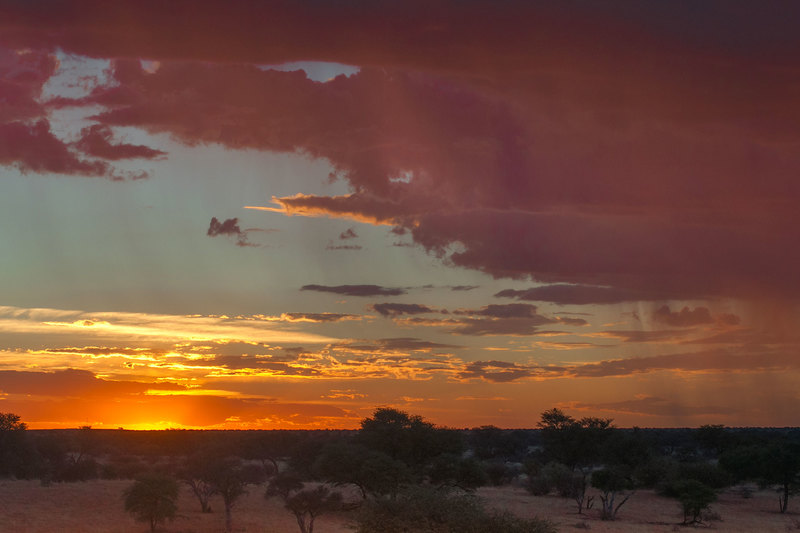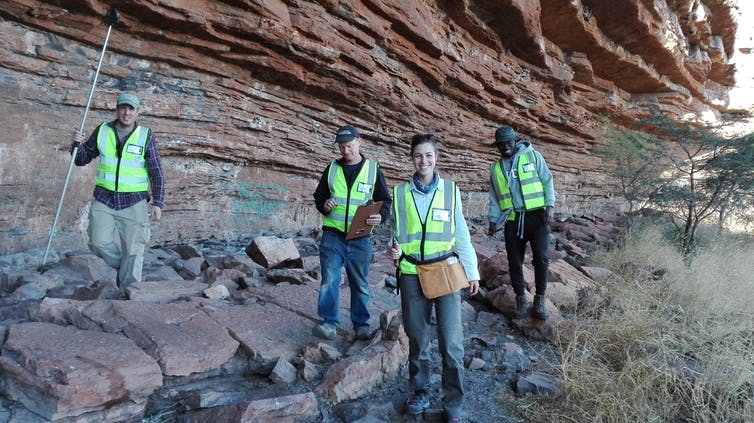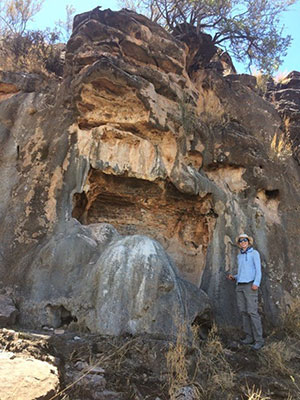Ancient southern Kalahari was more important to human evolution than previously thought
01 April 2021 | Story Benjamin Schoville, Jessica von der Meden, Robyn Pickering and Wendy Khumalo. Read time 7 min.
University of Cape Town (UCT) researchers are among an international team of researchers who studied and described a new archaeological site, Ga-Mohana Hill, and found evidence for complex symbolic behaviours 105 000 years ago.
The Kalahari is a huge expanse of desert in southern Africa, stretching across Botswana and into the northernmost part of South Africa’s Northern Cape province.
It’s in the Northern Cape that we studied and described a new archaeological site, Ga-Mohana Hill, for research just published in Nature.
Our international team, made up of researchers from South Africa, Canada, the UK, Australia and Austria, has found evidence for complex symbolic behaviours 105,000 years ago.
Humans use symbols as a shortcut to communicate important ideas. Identifying the ancient roots of symbolism is limited to what preserves over time. Large calcite crystals from several kilometres away were found in the cave alongside stone tools. Why the crystals were brought there is unknown; they are not modified and do not seem to have a functional purpose. They may have been collected for their aesthetic properties, or included in ritual activities.
Crystals are collected by many people around the world to this day for ritual purposes. Early humans bringing crystals into Ga-Mohana suggests innovation in how people interacted with each other and their environment.
But such ancient innovation didn’t occur in a bubble: there is context to when and where innovation occurs. What brought people there in the first place, at that time, to begin using those tools and collecting those crystals?
Reconstructing past environments allows us to understand this context. And so, a major part of our research centred on working out what the area’s climate was like 105,000 years ago. To do so, we looked at Ga-Mohana’s rocks.
The southern Kalahari is often considered too arid to be important for human evolution. Our work contradicts the idea of an arid and empty interior. At some points, Ga-Mohana was much wetter than today, with pools of standing water and waterfalls tumbling down the hillside. The fact that the climate was very different then opens up possibilities about why this previously under-appreciated region must have played an important role in our species’ evolutionary history.

Archaeological and geological fieldwork allowed us to piece together this story.
The rocks
Some kinds of rocks preserve traces of the past environment. The Ga-Mohana hillside is draped in deposits called tufa; these form from water leaking out of cracks in the bedrock. This occurs when underground aquifers are recharged with rain water and begin to overflow. Over time, these waters precipitate calcium carbonate and form tufa.
The tufa system is no longer active, apart from small drips during the rainy season. But the fossil tufas represent periods in the past when there was more water available. Similar structures are growing today at places like Sitting Bull Falls, New Mexico in the US. Knowing when the tufas formed at Ga-Mohana tells us when it was wetter there.
To find out how old the tufas are and when these wet periods occurred, we used a method called uranium-thorium dating. Uranium is radioactive, meaning that it decays at a constant rate over time and produces ‘daughter’ elements; thorium is one of them. When tufa forms, uranium is ‘locked’ into the crystal structure and begins to decay to produce thorium.

The uranium-thorium system acts like a clock that starts when the tufa is formed. By precisely measuring how much uranium and thorium is in the tufa today, we use the known decay rate to calculate when the ‘clock’ started. This method is routinely applied to cave deposits like stalagmites and flowstones but has not been used very much on tufa.
This is because dating tufas is not straightforward. Unlike protected caves, tufa forms in the open where sunlight, dust, and debris can contaminate the ages. It took several years of dedicated work to get around these problems: we chose the tufa samples in the field with care and used a sensitive laser to make images of the layers with the most uranium present. We could then target these layers for dating. This provided a real breakthrough.
In the end, we dated two layers from an ancient tufa waterfall to between 110,000 and 100,000 years old. This means that fresh water was flowing down the hillside at exactly the same time that people were living at the shelter. Such wet conditions at this time were unexpected, so we wanted to know what caused such a large increase in water to begin with.
To understand the reasons for the region being much wetter 105,000 years ago than it is today, we looked at how climate processes influence modern rainfall there.
We did this by comparing historical rainfall records to current major climate drivers. We then looked back into the past and used data from an ocean core (deep sea sediments drilled out of the ocean floor which record changes in the earth’s ocean and climate). These data show that parts of the Indian Ocean were warmer around 105,000 years ago. Climate systems are complex, but basically this would have increased the amount of rain in the southern Kalahari, filling the aquifer, and causing the build up of the tufa during this time period.
An important role
People were drawn to Ga-Mohana for many reasons. Surface water would have been one. The many ostrich eggshell fragments we also found were probably used as water carriers 105,000 years ago. Perhaps these were being filled with water as it flowed down the hillside. One possibility is that water carriers allowed our ancestors to travel further distances.
There is still more to be learned from Ga-Mohana, its artefacts and its rocks. This will allow scientists to understand the role this space played in human evolutionary history better.![]()
Benjamin Schoville, Senior Lecturer in Archaeology, The University of Queensland; Jessica von der Meden, PhD candidate; Robyn Pickering, Senior lecturer and Wendy Khumalo, Student, Department of Geological Sciences, University of Cape Town.
Highlights from 2021
As we look back on 2021, we celebrate some of the stories that were popular with readers of the UCT News website during the year.

UCT’s Children’s Institute asked Parliament to increase the Child Support Grant by at least R10.
05 Jan 2022 - 3 min read Readers’ Choice 2021
The first matriculant from his Limpopo school to attend UCT, Marvel Makhubele graduatied with a PhD in Geoscience on 14 December 2021.
05 Jan 2022 - 4 min read Readers’ Choice 2021
After scoring 8% for his first maths test, UCT graduate Wesley Chen almost gave up on ever attaining his chemical engineering degree.
04 Jan 2022 - 7 min read Readers’ Choice 2021
As the fulfilment of a promise, this mother-and-daughter duo celebrated their graduation together.
04 Jan 2022 - 4 min read Readers’ Choice 2021
After a tough year (and many prior struggles), student leader Lance-Selae August graduated with first class honours.
03 Jan 2022 - 7 min read Readers’ Choice 2021
Several UCT buildings were gutted by an inferno which started on the slopes of Devil’s Peak in April 2021.
29 Dec 2021 - 3 min read Readers’ Choice 2021
Associate Professor Amir Patel and Dr Mohohlo Tsoeu are UCT’s first-ever recipients of Google’s Research Scholar Program.
28 Dec 2021 - 7 min read Readers’ Choice 2021
UCT researchers are among those who studied and described a new archaeological site, Ga-Mohana Hill, and found evidence for complex symbolic behaviours 105 000 years ago.
28 Dec 2021 - 7 min read Readers’ Choice 2021
Celebrated sisters and UCT alumni Zubeida and Zuleiga Jaffer reflected on the changes they’d seen at the university over the years.
24 Dec 2021 - 10 min read Readers’ Choice 2021
UCT maintained its ranking as the 39th most international university in the world by Times Higher Education.
22 Dec 2021 - 2 min read Readers’ Choice 2021



















